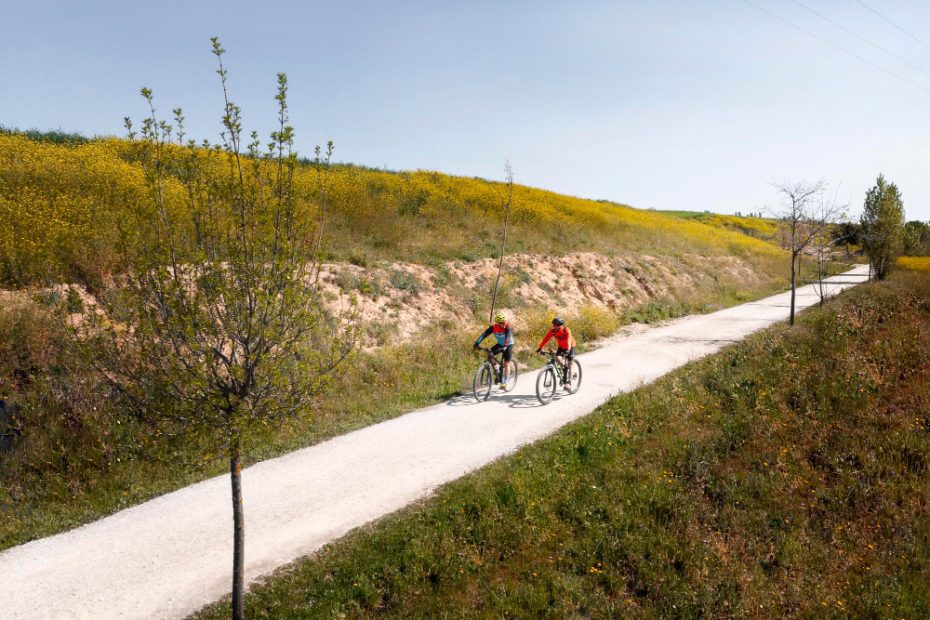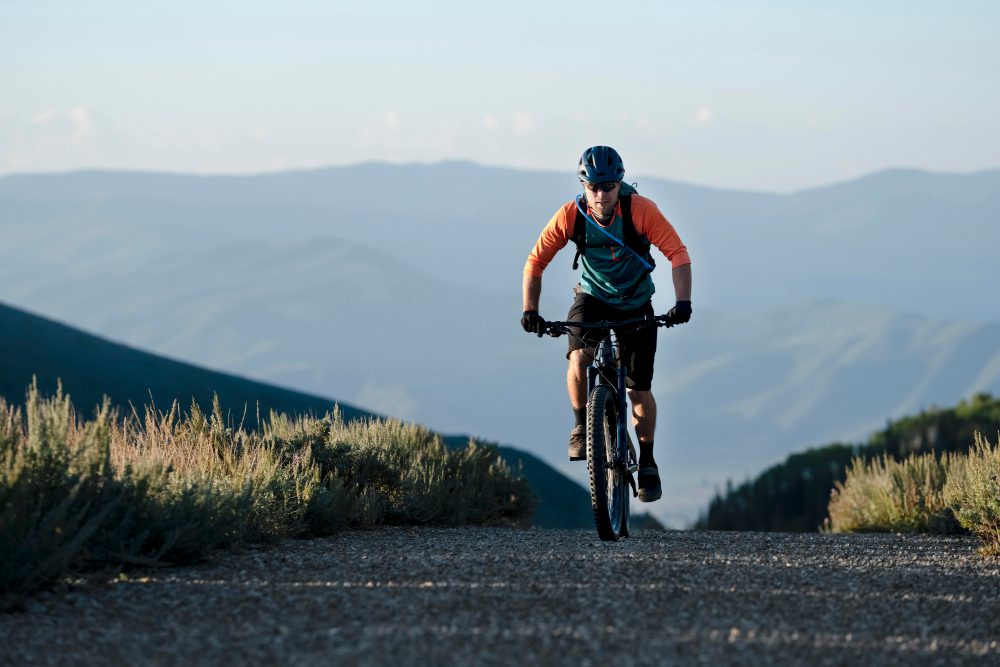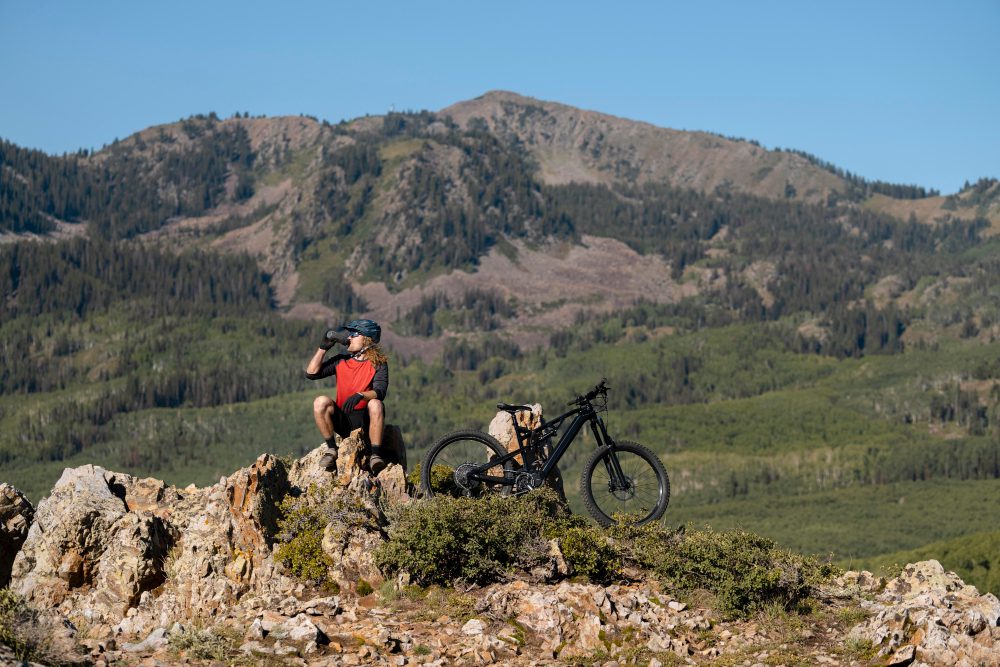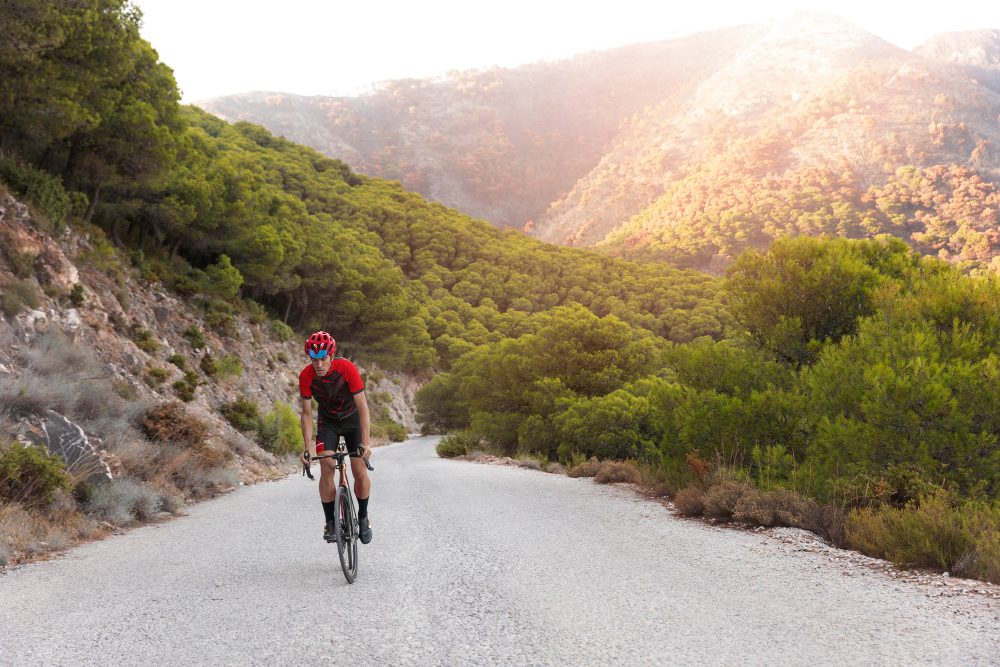Do long bike rides build muscle?
When it comes to building muscle, most people think of activities like weightlifting or high-intensity interval training (HIIT). However, long bike rides can also play a significant role in muscle development. Although cycling primarily targets the cardiovascular system, it also engages various muscle groups, leading to increased strength and endurance.
The Muscles Engaged in Cycling
Cycling is a full-body workout that requires the engagement of multiple muscle groups. While the legs, particularly the quadriceps, hamstrings, and calf muscles, do the majority of the work, other muscles are involved as well. These include the glutes, lower back, core muscles, and even the upper body muscles when gripping the handlebars and maintaining an upright posture.
A study conducted by researchers at the University of Jyväskylä in Finland found that cyclists had significantly greater muscle cross-sectional areas in their thighs compared to sedentary individuals. This suggests that regular cycling can indeed contribute to muscle growth and development.
Muscle Building Benefits of Long Bike Rides
Long bike rides, especially those that involve hills or challenging terrains, can provide a significant stimulus for muscle growth. Here are some ways in which long bike rides contribute to building muscle:
- Resistance Training: Cycling against gravity or battling headwinds provides natural resistance, similar to weightlifting. This resistance stimulates muscle fibers, leading to muscle adaptation and growth.
- Endurance Conditioning: Endurance rides not only build cardiovascular endurance but also improve the endurance capacity of muscles. The repetitive nature of cycling helps muscles adapt to prolonged effort, making them stronger and more resistant to fatigue.
- Recruitment of Lower Body Muscles: The repetitive pedaling motion engages the major muscle groups in the lower body, such as the quadriceps, hamstrings, and glutes. These muscles are key in generating power during cycling and consequently experience significant hypertrophy over time.
“Long bike rides have the potential to build muscle mass and improve muscular endurance, particularly in the lower body,” says Dr. Emma Johnson, a sports scientist at the University of Birmingham. “However, it is essential to ensure proper nutrition and recovery to support muscle growth.”
Nutrition and Recovery for Optimal Muscle Growth
While long bike rides can stimulate muscle growth, it’s important to support this process with proper nutrition and recovery. Here are some key considerations:
| Nutrition | Recovery |
|---|---|
|
|
By incorporating these nutrition and recovery strategies into your routine, you can maximize the muscle-building benefits of long bike rides.
In conclusion, while long bike rides primarily target cardiovascular fitness, they also contribute to muscle development. Cycling engages various muscle groups, especially in the lower body, leading to increased muscle strength and endurance. Additionally, long rides provide resistance training and endurance conditioning, stimulating muscle growth over time. To optimize muscle-building results, it’s important to support your rides with proper nutrition and allow sufficient recovery time for muscles to repair and grow. So, next time you hop on your bike for a long ride, know that you’re not only strengthening your heart but also building muscle along the way!
Is it possible to bike 10 miles in 30 minutes?
When it comes to cycling, speed is a key factor for many enthusiasts and athletes. Biking 10 miles in just 30 minutes is an impressive feat that requires both skill and physical fitness. However, achieving this goal may not be realistic for everyone.
Factors that affect biking speed:
- Physical fitness level
- Terrain and road conditions
- Weather conditions
- Type of bicycle and its specifications
Physical fitness level
Your overall fitness level plays a crucial role in determining your biking speed. Regular training and conditioning can improve your cardiovascular endurance and leg strength, allowing you to pedal faster and cover longer distances in less time.
Terrain and road conditions
The type of terrain you will be cycling on, whether it’s flat or hilly, can significantly impact your speed. Riding on a straight, smooth road will generally allow for faster speeds compared to navigating steep hills or uneven surfaces.
Weather conditions
Adverse weather conditions such as strong winds or heavy rain can make it more challenging to maintain high speeds while cycling. It’s important to take into account the weather forecast and adjust your expectations accordingly.
Type of bicycle and its specifications
The type of bicycle you’re using can also affect your speed. Road bikes, with their lightweight frames and narrow tires, are designed for speed and efficiency. Mountain bikes, on the other hand, are built for off-road use and may not be as efficient on paved surfaces.
“Remember, cycling is not solely about speed. Long bike rides are a great way to build muscle and improve overall fitness.”
It’s essential to set realistic goals based on your current abilities and gradually work towards improving your speed and endurance. Pushing yourself too hard too soon can lead to injuries, fatigue, or potential disappointment.
Conclusion:
Biking 10 miles in 30 minutes is a challenging goal that requires a combination of factors such as physical fitness, riding conditions, and equipment. While it may not be achievable for everyone, with proper training and the right conditions, it is certainly possible to increase your biking speed and reach new milestones.
What is the average time to bike 3 miles?
When it comes to biking, knowing how long it takes to cover a certain distance can be helpful for planning your rides or setting goals. If you’re aiming to bike 3 miles, the average time it takes can vary depending on several factors.
Terrain and Cycling Ability
The time it takes to bike 3 miles can be influenced by the terrain you’re riding on. If you’re cycling on a flat surface with no significant inclines or obstacles, you can expect to cover the distance relatively quickly. On the other hand, if you’re facing steep hills or challenging off-road trails, it may take longer to navigate through them.
Your cycling ability also plays a role. Experienced cyclists who have built up their endurance and speed over time may be able to complete the distance faster than beginners or casual riders.
Speed and Fitness Level
The average speed at which people cycle can vary greatly. It depends on factors such as fitness level, training, and the type of bike being used. If you’re an avid cyclist or someone who regularly participates in cycling events, you might be able to complete 3 miles in a shorter time compared to someone who cycles less frequently.
Additionally, your fitness level will affect your cycling speed. Those who engage in regular cardio exercises and have good overall fitness will likely cover the distance quicker than someone who is less physically active.
Average Time Estimates
While the time it takes to bike 3 miles can differ from person to person, a general estimate for an average adult cyclist on a moderately flat terrain would be around 15-20 minutes. This assumes an average speed of around 10-12 mph (miles per hour).
It’s important to keep in mind that this is just an estimate and your actual time may vary.
If you’re looking to improve your cycling speed or decrease the time it takes to bike 3 miles, incorporating regular training sessions, interval exercises, and focusing on building your fitness level can help you achieve your goals.
Cycling is not just about how fast you go, but about enjoying the journey and staying active.
If you’re aiming to track your progress or compare your times with others, keeping a log or using a fitness tracking app can be helpful. It allows you to monitor your improvements and set new targets.
How long should 5 miles take on a bike?
Factors Affecting Cycling Speed
When it comes to cycling, the time it takes to cover a specific distance can vary based on several factors. These include the cyclist’s fitness level, terrain, weather conditions, and type of bike. Calculating how long it should take to cycle 5 miles will give you an estimate, but it is important to keep in mind that it can differ from person to person.
Estimating Cycling Time
On average, a recreational cyclist can cover 5 miles in around 20-30 minutes. However, this estimation assumes a flat terrain, favorable weather conditions, and a moderate pace. If you are a beginner or have a lower fitness level, it may take a bit longer. Conversely, experienced cyclists who are in good shape might complete the distance faster.
Training and Progress
Regular cycling helps improve endurance and speed, allowing you to cover the same distance faster over time. As you build muscle, stamina, and cardiovascular fitness, you may find that your average speed increases. Keeping track of your times and measuring the progress can be a great motivator for improvement.
Quote:
“Cycling is not only a great way to stay fit, but it also allows you to explore your surroundings and enjoy the outdoors.” – Unknown
Challenges and Variations
It is important to consider that various factors might affect your cycling time. For example, hilly terrains can significantly slow you down, while strong headwinds might require more effort to maintain your usual speed. Traffic conditions and bike traffic can also impact your journey.
Tips for Faster Cycling
If you’re looking to improve your cycling speed, here are a few tips:
- Interval training: Incorporate high-intensity intervals into your rides to push yourself and increase your overall speed.
- Aerodynamic position: Maintain a streamlined position on your bike to reduce wind resistance.
- Proper gear: Ensure you have a well-maintained bike with properly inflated tires and appropriate gearing for the terrain.
- Strength training: Include exercises that target your leg muscles, such as squats and lunges, to improve power and efficiency.
Table – Estimated Cycling Times
| Cycling Distance | Estimated Time |
|---|---|
| 5 miles | 20-30 minutes |
| 10 miles | 40-60 minutes |
| 20 miles | 1-2 hours |
In conclusion, the time it takes to cycle 5 miles can vary depending on several factors. While the average range is around 20-30 minutes for recreational cyclists, individual fitness levels, terrain, weather conditions, and the type of bike can influence this duration. Regular training and incorporating tips for faster cycling can help improve your speed over time. Remember, enjoy the ride and appreciate the journey!
Conclusion
The average time to bike 3 miles depends on various factors such as terrain, cycling ability, speed, and fitness level. While it can range from 15-20 minutes for an average adult cyclist on moderately flat terrain, individual differences and circumstances will influence the actual time taken.
Remember, the most important thing is to enjoy the ride and have fun while staying active!



